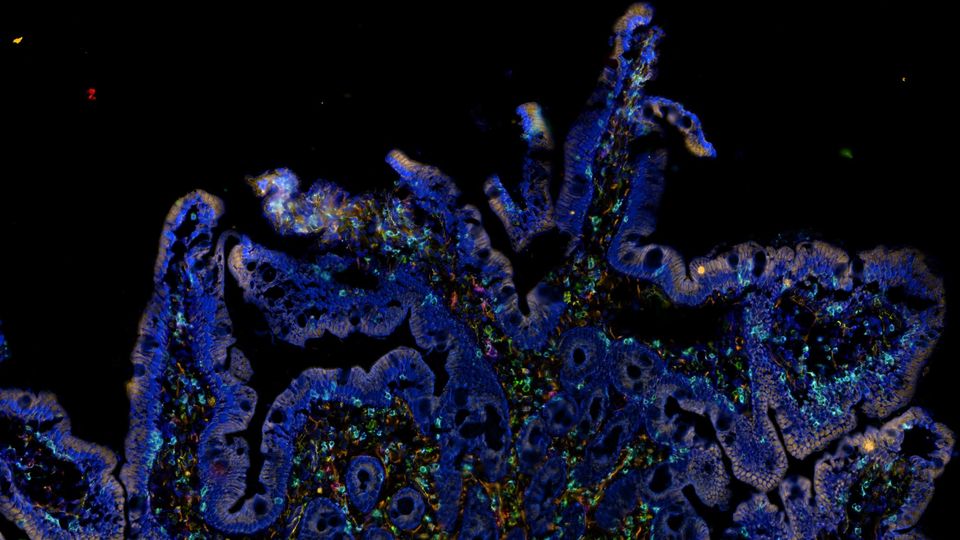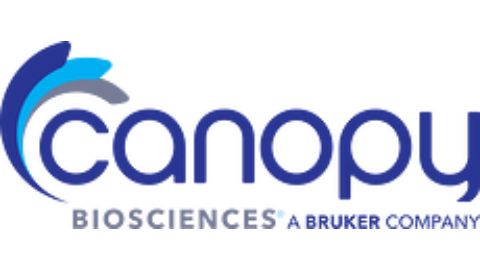Spatial biology is a cutting-edge field that seamlessly merges traditional molecular biology techniques with advanced spatial analysis methods. This technique allows researchers to analyze omic data with single-cell precision while maintaining the intact spatial distribution within the sample.
Several platforms and technologies are currently on the market to support spatial biology research. However, not all of them offer the sensitivity, flexibility and throughput required to analyze complex and big data sets efficiently.
This listicle presents some fundamental concepts about spatial biology and highlights innovative solutions that can help researchers accelerate their spatial biology studies.
Download this listicle to discover:
- Basic concepts and applications of spatial biology.
- The advantages of precise spatial multiplexing technology
- Collaborations that can help researchers get started in this field.
Listicle
1
How to Get Started with
Spatial Biology
Spatial biology is a cutting-edge interdisciplinary field at the forefront of biological research, seamlessly
merging traditional molecular biology techniques with advanced spatial analysis methods. Spatial biology
technologies preserve the native context of biological samples, allowing for a deeper understanding of
cellular organization, interactions and localized functions. In this way, spatial biology offers insights that
transcend the limitations of traditional molecular studies and paves the way for innovative applications in
various fields.
In this guide, Dr. Thomas Campbell, Associate Director of Product Management at Canopy Biosciences,
shares some fundamental concepts about spatial biology. He also explains how Canopy Biosciences
instruments and services can help researchers accelerate their spatial biology studies.
Spatial biology in a nutshell
Spatial biology is an exciting, growing field. Historically, genomic and transcriptomic studies have been
performed using bulk analysis methods where a large number of analytes can be detected and quantified
in the sample. However, with this type of analysis, it is not possible to attribute analytes to particular cells
or cell types. As technology has advanced, single-cell analysis has been made possible. Now, specific
expression levels can be attributed to specific cells. But, in traditional single-cell analyses, there is no
information about the spatial context of these single cells and how they interact with one another. Spatial
biology allows researchers to interrogate a high number of markers with single-cell precision while
maintaining the intact spatial distribution within the sample. In this way, it is possible to investigate how
cells interact within tissues and uncover new biological findings.
Applications of spatial biology
Some of the most popular applications of spatial biology are oncology and neurobiology. For example,
spatial tools can be helpful to profile immune cell populations and understand how they interact with tumor
cells, as well as to characterize the tumor microenvironment. This is important because some studies
showed that predictive clinical outcomes not only depend on the abundance of immune cells but also on
how well those immune cells infiltrate a tumor. It is possible to quantify the relative abundance of different
immune cell populations with single-cell technologies; however, considering spatial context is essential to
understanding how cells regularly infiltrate tumors, which may be more predictive of clinical outcomes.
Watch the complete Teach Me in 10 episode with Thomas Campbell here.
HOW TO GET STARTED WITH SPATIAL BIOLOGY 2
Listicle
Next-generation ChipCytometry technology
In the past couple of years, several different platforms and technologies have been commercialized to
support spatial biology research. Some platforms focus on transcriptomic analysis, while others are more
focused on protein detection. The different commercial options also differ in their spatial resolution.
The ChipCytometry CellScapeTM platform is an end-to-end solution for highly multiplexed spatial omics.
It combines high-quality immunofluorescence imaging with advanced image analysis software, enabling
accurate and precise quantification of analytes with single-cell resolution. The instrument has the
best-in-class optical resolution, allowing researchers to identify individual cells with high fidelity. This
is combined with high dynamic range imaging, enabling the generation of images with an eight-long
dynamic range – exceeding the two- to three-long expression ranges offered by most commercial
platforms. A broad dynamic range is necessary to detect the high expressors, the low expressors and
quantify those simultaneously within the same sample. This is one of the main differences between the
CellScape platform and other platforms on the market.
Another difference is assay flexibility. Canopy Biosciences offers several pre-validated assay kits, which are
optimized for some core immune markers. Most users have particular markers that are very specific to
their research question. But with the CellScape platform, it is possible to validate any type of marker using
an open-source, antibody-based detection from a variety of different commercial vendors. This lowers the
barrier for assay validation and assay customization and gives users maximum flexibility. Finally, another
important feature of the CellScape platform is its high throughput. This allows researchers to ask big
questions, analyze large cohorts and generate a large dataset in a short amount of time.
How to get started?
Finding collaborators or partners is a great way to get started in the field. Canopy Biosciences offers
CRO services to help customers generate pilot-scale proof of principle studies. This gives researchers
an idea of the power of the platform and shows what types of research they can do with these spatial
technologies. Partnership with a CRO can help researchers define the scope of their work and how to
incorporate spatial analyses into their broader research questions.
Learn more about how to get started with spatial biology.
Dr. Thomas Campbell is Associate Director of Product Management
at Canopy Biosciences – A Bruker Company, focused on the
development of tools to advance spatial biology research and
applications. Thomas received a PhD in chemistry from Saint Louis
University (Missouri, USA). Prior to his time at Canopy Biosciences,
he worked as a strategy consultant at Kantar Health where he
advised pharmaceutical and biotech companies with a focus on
commercial strategy for oncology and specialty therapeutics.
Sponsored by



